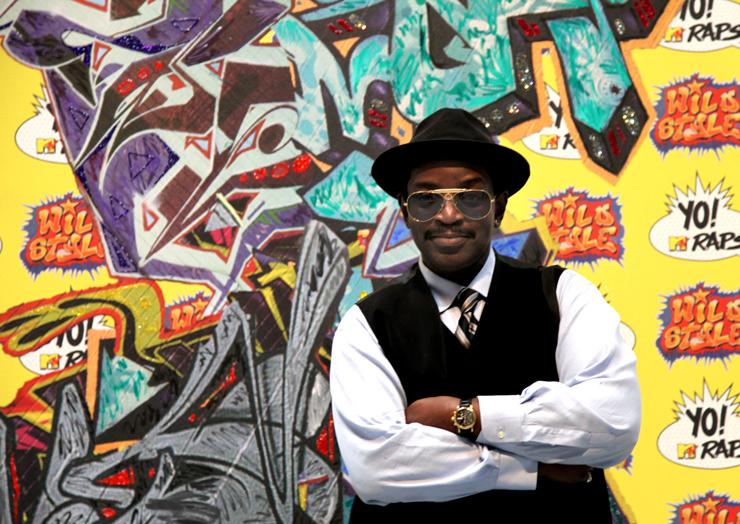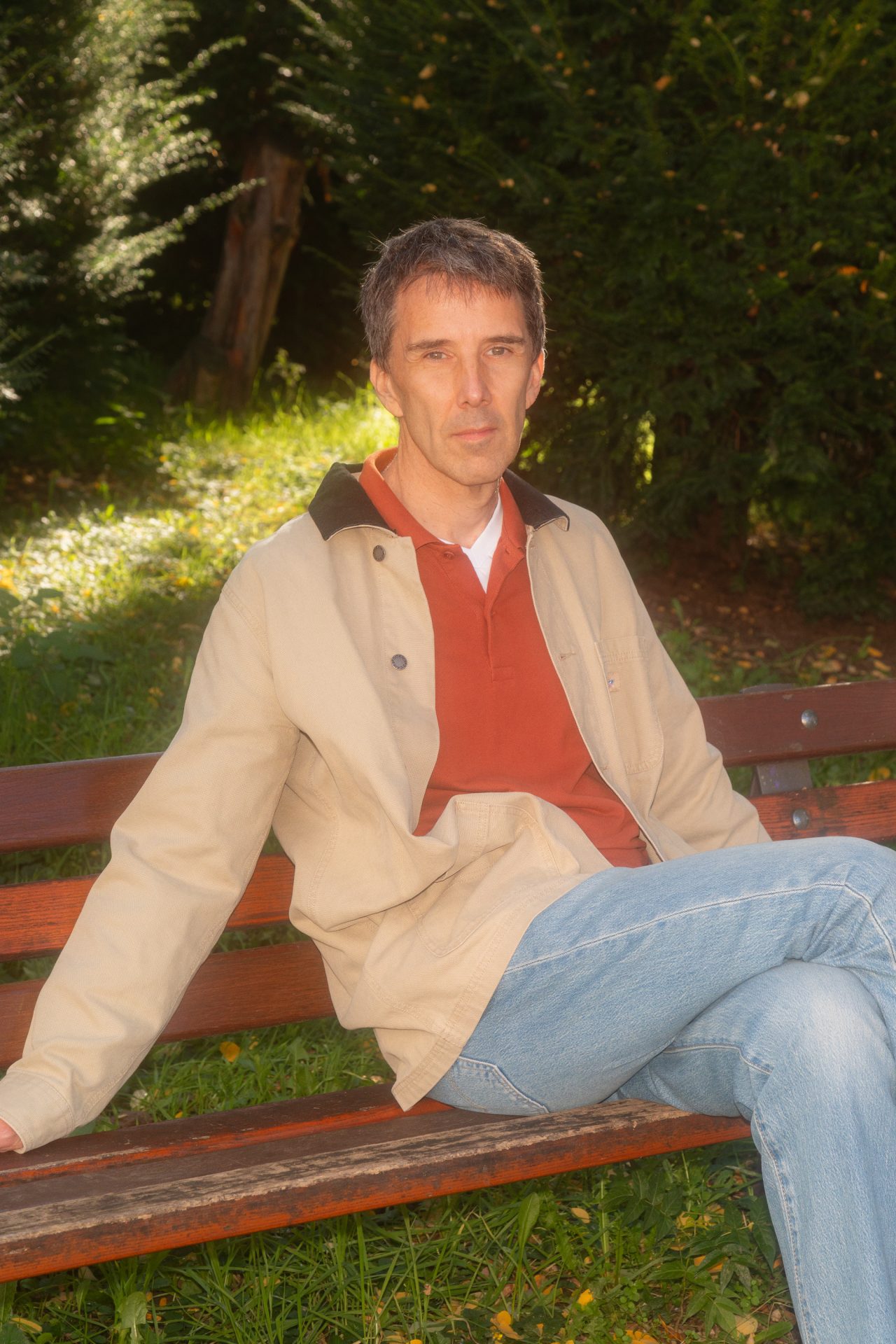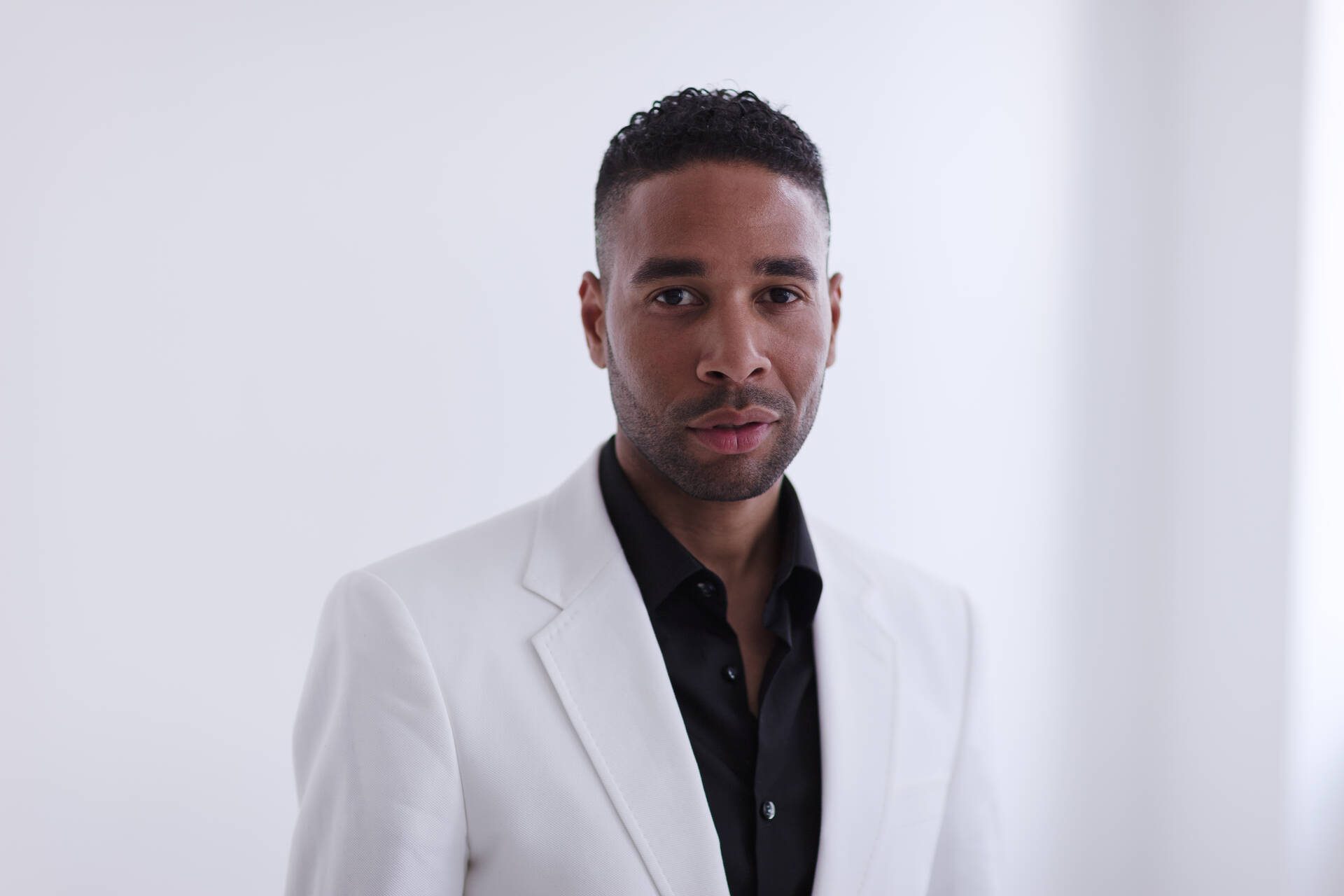Multi-talent Byron Deloatch, who has become well known in Frankfurt’s party scene with his creative cookery events and appearances as a band leader and singer in clubs such as Travolta and Nu Soul, has suggested one of his favorite restaurants as the meeting point for our interview: Fonda de Santiago, a Mexican restaurant in Frankfurt. He’s a regular here and the staff knows what he likes, but when the waiter tries to serve him a margarita, Deloatch firmly refuses. “Since I’ve known that I’ll be singing at the Schirn in March, I’ve been off alcohol to preserve my voice!”
Who – in your eyes – was Jean-Michel Basquiat?
I like to imagine him as a comet, with an enormous tail of ions blazing away behind him. Just like Halley’s Comet, Basquiat is truly exceptional, the sort of person you might only meet once in a lifetime. To continue on that line, Basquiat also burnt out far too early – but thanks to his art he remains immortal.
When did you become aware of him and his art?
When I was a child. The fact that my father lived in New York for a few years before I was born aroused my interest in the art and music scene there. The name Basquiat, which is closely connected with certain pioneers of Hip Hop, cropped up in our family home very early on. Like most children of the Eighties, I grew up with MTV. I was a fan of the show Yo! MTV Raps, which was hosted by Fab Five Freddy, who was a friend of Basquiat’s and with whom he made music. MTV was my gateway to Hip Hop culture. Later I began delving deeper into musical history.

Fab 5 Freddy, Image via: ilovegraffiti.de
On March 22 you’ll be gracing the Crown Club at the Schirn – a kind of pop-up club modeled on the legendary New York Mudd Club, where Basquiat was a regular. What can we expect to hear on the night?
A musical journey through time, starting with Disco, Funk and Soul, then becoming increasingly electronic. And of course the Jazz Basquiat loved will also play a role. For me, it’s all about capturing the energy and the magnetism that abounded in New York between 1979 and 1988, the year of Basquiat’s death. At the end of the 1970s Disco was slowly dying. New York was in a financial crisis. From this atmosphere of doom emerged new genres like Hip Hop, Breakbeat and Boom Bap.
The year 1979 was also when Basquiat’s star began to shine and people became ever more aware of his name. When he started making money through his art, he also started to throw extravagant parties in his apartment. Guests were welcomed with champagne and caviar, for example. And champagne and caviar will also be on our agenda to set the mood. During the course of the evening I’ll be singing, supported by DJ Sven Hergenhahn and sax player Ersan Kenanov. In addition, there will be another DJ set of Josh Johnson.

How should I dress for the club if I want to fit in with the dress code of the time?
You’ll fit right in if you come in fur or with lavishly styled hair. If you feel like it, put your high heels on – but don’t forget a second pair of shoes so you can dance! The fashion back then was thoroughly luxurious and elegant – and that goes for the Mudd Club, too, which was initially intended as a less chic alternative to Studio 54, but quickly became just as glamorous. On the other hand though, you could dress as a B-boy or B-girl. Kangol hats and Dookie chains were all the rage back then.
Streetwear or glamor – either is possible. Someone like Basquiat was also always interested in combining very different styles. His musical tastes ranged from Jazz to Punk and from New Wave to Hip Hop. He was a complex character who refused to be pigeonholed and who courageously broke the genre molds. That’s what I like so much about him.
They say Basquiat’s parents’ record collection was crucial for his musical socialization. What was your first contact with music?
It was undoubtedly gospel. North Carolina, where I grew up, is part of the so-called Bible Belt. There’s a long tradition of gospel there. As a child, I sang in the church choir. Later, at university, I was in a Doo-Wap band. As far as music is concerned, I’m self-taught. I never had any lessons. For people with a southern accent, music is simply a natural part of life. When I moved to Germany in 2006, where music didn’t have the same value, it was a real culture shock for me at first.
As a consequence, I felt a growing need to express myself, so I founded my first band, with which I made regular appearances at Frankfurt’s Nu Soul club. Some of the musicians from back then still play in my current band, “Byron Deloatch and The Love at First Sound Experience”. My most important instrument is my voice, but I don’t see myself simply as a soul singer, but rather as a vessel blessed with a gift, through which creativity flows. It takes on a life of its own – and in doing so makes use of a variety of different forms of expression.

Your appearances – for example during the Noughties as part of the “Visionaries and Icons” party series at the Nu Soul club – are usually passionate and distinct homages to Afro-American musical greats such as Marvin Gaye, John Legend and R. Kelly. Do you write your own songs too?
Yes, but only for myself. Not for the public. I produce and write songs, as well as poems. I’m also very interested in literature. One of my favorite authors is James Baldwin.
Jean-Michel Basquiat was a big fan of the Charly Parker biography “Bird Lives!”, written by Ross Russell. He even gave the book as a gift to friends. Are you similarly interested in the biographies of your musical role models?
If something really touches me, then I’m always interested in the story behind it. I see myself as a critical consumer. If I buy something, then I’m investing in a story. Regardless of whether it’s a record or an item of clothing. The sneakers on my feet, for example, connect me to the story of Nike, which quite obviously basketball star Michael Jordan is part of, as we all know. Or take a look at my scarf! Can you see how beautifully crafted it is? It was knitted by my mother. It’s always nice to know who is behind things.

Charlie Parker, Photo: BBC/Herman Leonard, Image via: telegraph.co.uk
Basquiat’s works of art contain multiple allusions to Jazz greats such as Miles Davis, Charly Parker and Louis Armstrong. What does this tradition mean to you?
A great deal. We’re talking about the American classics here, after all. Look at New Orleans: All those spices that hang in the air – you can literally smell them in the music of Louis Armstrong. New Orleans is not just the cradle of Jazz, but also a culinary world capital. For me, Jazz and cooking have a lot in common. When my mother used to prepare soul food for us at home, she also experimented with a wide variety of ingredients. It was all about improvisation.
And you enjoy cooking too…
Absolutely. The very first event I organized after moving to Germany was not a purely musical event but rather a cookery event at Club Michel. And since then, I’ve cooked quite frequently at Club Michel, but at other venues too.
Assuming Jean-Michel Basquiat was still alive today: Where would he go to party?
He would most definitely open his own club.

